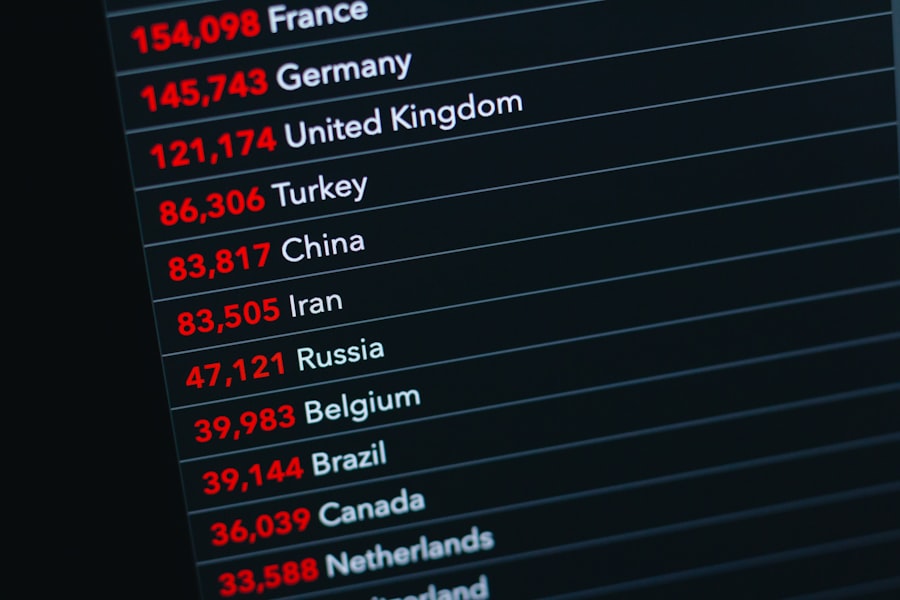The Third World Debt Crisis represents a significant chapter in the narrative of global economics, particularly affecting developing nations. As you delve into this complex issue, you will uncover how the accumulation of debt has not only stunted economic growth but has also led to profound social and political ramifications. The crisis, which gained prominence in the late 20th century, continues to resonate today, as many countries grapple with the burdens of repayment and the conditions imposed by international lenders.
Understanding this crisis is crucial for grasping the broader implications of global finance and the interconnectedness of economies. As you explore the intricacies of the Third World Debt Crisis, you will find that it is not merely a financial issue but a multifaceted dilemma that intertwines with issues of sovereignty, development, and human rights. The narrative is filled with stories of nations striving for progress while being shackled by debt obligations that often seem insurmountable.
This article aims to provide a comprehensive overview of the crisis, its historical roots, and its ongoing impact on millions of lives across the globe.
Key Takeaways
- The Third World Debt Crisis has had far-reaching economic, social, and political consequences for developing countries.
- Structural Adjustment Programs have been a controversial solution to the debt crisis, with mixed results and significant social impact.
- International Financial Institutions such as the IMF and World Bank have played a key role in debt relief initiatives and shaping the global response to the crisis.
- The COVID-19 pandemic has amplified existing challenges of the debt crisis, highlighting the need for long-term solutions and global economic justice.
- Civil society and grassroots movements have been advocating for debt relief and addressing the root causes of the debt crisis to build a sustainable global economy.
Historical Context: Origins and Evolution of the Debt Crisis
To fully appreciate the Third World Debt Crisis, it is essential to trace its origins back to the post-World War II era when many developing countries sought to modernize their economies. In your exploration, you will discover that the 1960s and 1970s were marked by a surge in borrowing, fueled by optimism and the availability of cheap credit. Nations invested heavily in infrastructure and social programs, believing that these investments would yield substantial returns.
However, this optimism was short-lived as global economic conditions shifted dramatically. The oil crises of the 1970s served as a catalyst for change, leading to soaring interest rates and a tightening of credit. As you examine this period, you will see how many developing countries found themselves unable to meet their debt obligations, leading to a cascade of defaults.
The situation was exacerbated by a lack of diversification in their economies and reliance on a few key exports. This historical context sets the stage for understanding how the debt crisis evolved over the decades, morphing into a complex web of financial dependency and economic vulnerability.
Impact on Developing Countries: Economic, Social, and Political Consequences

The consequences of the Third World Debt Crisis are far-reaching and multifaceted. Economically, you will find that many developing countries have faced stagnation or even regression as they divert resources from essential services to service their debts. This diversion has led to underfunded education systems, inadequate healthcare, and crumbling infrastructure.
The burden of debt has stifled innovation and entrepreneurship, leaving nations trapped in a cycle of poverty and dependency. Socially, the impact is equally profound. As you consider the human aspect of this crisis, you will see how communities have been affected by austerity measures imposed by international lenders.
These measures often lead to increased unemployment, reduced access to basic services, and heightened inequality. Politically, the crisis has fostered instability in many regions, as governments struggle to maintain legitimacy while implementing unpopular policies dictated by external creditors. The interplay between economic hardship and social unrest creates a volatile environment that can lead to conflict and further complicate efforts toward recovery.
Structural Adjustment Programs: A Controversial Solution to the Debt Crisis
| Country | Debt Crisis | Structural Adjustment Programs | Impact |
|---|---|---|---|
| Argentina | 1980s | Implemented | Increased poverty |
| Nigeria | 1980s | Implemented | Reduced public spending |
| Greece | 2010s | Implemented | Unemployment rise |
In response to the escalating debt crisis, international financial institutions introduced Structural Adjustment Programs (SAPs) as a means to stabilize economies and restore creditworthiness. As you delve into this topic, you will encounter a range of opinions regarding the effectiveness and morality of these programs. On one hand, proponents argue that SAPs provide necessary reforms that can lead to long-term economic stability.
On the other hand, critics contend that these programs often prioritize austerity over social welfare, exacerbating existing inequalities. You will find that SAPs typically require countries to implement sweeping reforms such as reducing government spending, privatizing state-owned enterprises, and liberalizing trade. While these measures may yield short-term financial relief, they often come at a significant social cost.
As you reflect on this dichotomy, consider how SAPs have shaped the economic landscape of developing nations and whether they truly offer a viable path toward sustainable development or merely perpetuate cycles of dependency.
Role of International Financial Institutions: IMF, World Bank, and Debt Relief Initiatives
International financial institutions like the International Monetary Fund (IMF) and the World Bank play pivotal roles in addressing the Third World Debt Crisis. As you explore their functions, you will see how these organizations provide financial assistance and technical expertise to struggling nations. However, their involvement is often accompanied by stringent conditions that can limit national sovereignty and exacerbate social tensions.
Debt relief initiatives have emerged as critical components of international efforts to alleviate the burden on heavily indebted countries. You will discover various programs aimed at providing relief through debt forgiveness or restructuring. While these initiatives can offer much-needed respite, they also raise questions about accountability and the long-term sustainability of such measures.
As you analyze these dynamics, consider how the actions of international financial institutions shape not only economic outcomes but also the political landscape in developing nations.
Debt Sustainability and the Need for Long-Term Solutions

As you navigate through discussions on debt sustainability, it becomes clear that addressing the Third World Debt Crisis requires more than just temporary fixes. You will learn about the importance of establishing frameworks that promote long-term economic stability and resilience. This involves not only managing existing debts but also creating conditions that prevent future crises from emerging.
In your examination of potential solutions, consider how fostering local industries, investing in education, and promoting equitable trade practices can contribute to sustainable development. You will find that empowering communities to take charge of their economic futures is essential for breaking free from cycles of debt dependency. By focusing on long-term strategies rather than short-term relief measures, nations can work toward building robust economies capable of withstanding external shocks.
Debt Crisis in the 21st Century: New Challenges and Emerging Issues
As you transition into the 21st century, it becomes evident that new challenges have emerged in relation to the Third World Debt Crisis. Globalization has intensified competition among nations while also exposing them to greater economic vulnerabilities. You will discover how fluctuations in commodity prices, climate change impacts, and geopolitical tensions have all contributed to an increasingly complex debt landscape.
Moreover, as developing countries seek to navigate these challenges, they often find themselves caught between traditional lenders and new players such as China. This shift in global finance raises questions about the implications for debt sustainability and economic sovereignty. As you reflect on these emerging issues, consider how they shape the future trajectory of developing nations in an interconnected world.
Global Financial System and the Interconnectedness of Debt
The Third World Debt Crisis cannot be viewed in isolation; it is deeply intertwined with the global financial system. As you explore this interconnectedness, you will see how decisions made in one part of the world can reverberate across borders, impacting economies far removed from their origins.
You will also encounter discussions about reforming international financial architecture to better accommodate the needs of developing countries. This includes advocating for more equitable lending practices and enhancing transparency in financial transactions. By recognizing the interconnected nature of debt within the global economy, you can appreciate the urgency for collaborative solutions that prioritize fairness and sustainability.
Debt Crisis and the COVID-19 Pandemic: Amplifying Existing Challenges
The COVID-19 pandemic has served as a stark reminder of vulnerabilities within global systems, particularly for developing nations already grappling with debt crises.
The pandemic has exacerbated existing inequalities while also highlighting the need for comprehensive approaches to recovery.
You will discover how calls for debt relief have intensified during this period as nations seek to redirect resources toward healthcare and social support systems. As you reflect on these developments, consider how they may reshape discussions around debt sustainability in a post-pandemic world.
Civil Society and Grassroots Movements: Advocacy for Debt Relief and Economic Justice
Amidst the complexities of the Third World Debt Crisis, civil society organizations and grassroots movements have emerged as powerful advocates for change. As you explore their roles, you will see how these groups mobilize communities to demand accountability from governments and international financial institutions alike. Their efforts highlight the importance of amplifying marginalized voices in discussions about debt relief and economic justice.
You will encounter inspiring stories of activism that challenge prevailing narratives around debt and development. These movements often emphasize human rights frameworks that prioritize social equity over mere economic metrics. By engaging with these perspectives, you can gain insight into alternative approaches that seek not only to alleviate debt burdens but also to foster inclusive growth.
Future Perspectives: Addressing the Root Causes of the Debt Crisis and Building a Sustainable Global Economy
Looking ahead, it is crucial to address the root causes of the Third World Debt Crisis if we are to build a sustainable global economy. As you contemplate potential pathways forward, consider how fostering equitable trade relationships, investing in local capacities, and promoting environmental sustainability can contribute to long-term resilience. You will find that collaboration among governments, international organizations, civil society, and private sectors is essential for creating holistic solutions that prioritize human well-being alongside economic growth.
By envisioning a future where debt is managed sustainably rather than perpetually accumulated, we can work toward a more just global economy that empowers all nations to thrive without being ensnared by cycles of debt dependency. In conclusion, your exploration of the Third World Debt Crisis reveals a complex interplay between economics, politics, and social justice. By understanding its historical context and ongoing implications, you are better equipped to engage with discussions about debt relief and sustainable development in an increasingly interconnected world.
The Third World debt crisis refers to the financial predicament faced by developing countries, primarily during the 1980s, when they were unable to service their external debts. This crisis was exacerbated by high-interest rates, falling commodity prices, and economic mismanagement. A related article that delves into the historical context and implications of this crisis can be found on HeyDidYouKnowThis. For more insights, you can read the article by visiting this link.
WATCH IT HERE! 💰 The Secret History of the Dollar: How Oil Replaced Gold (The Petrodollar Mystery)
FAQs
What is the Third World Debt Crisis?
The Third World Debt Crisis refers to the massive accumulation of external debt by developing countries, primarily in the 1970s and 1980s. These countries borrowed heavily from international financial institutions and commercial banks to finance their development projects and infrastructure.
What caused the Third World Debt Crisis?
The Third World Debt Crisis was caused by a combination of factors, including high oil prices, global economic recession, and high interest rates. Developing countries were also encouraged to borrow by international financial institutions and commercial banks, leading to unsustainable levels of debt.
How did the Third World Debt Crisis impact developing countries?
The Third World Debt Crisis had severe economic and social impacts on developing countries. Many countries were unable to repay their debts, leading to economic stagnation, high inflation, and social unrest. The crisis also led to a decrease in public spending on essential services such as healthcare and education.
What measures were taken to address the Third World Debt Crisis?
To address the Third World Debt Crisis, international financial institutions and creditor countries implemented various measures, including debt restructuring, debt forgiveness, and the establishment of debt relief programs such as the Heavily Indebted Poor Countries (HIPC) Initiative.
Is the Third World Debt Crisis still relevant today?
While the Third World Debt Crisis peaked in the 1980s, its legacy continues to impact many developing countries today. Debt burdens remain a significant challenge for many countries, and efforts to address the ongoing debt crisis are still ongoing.
